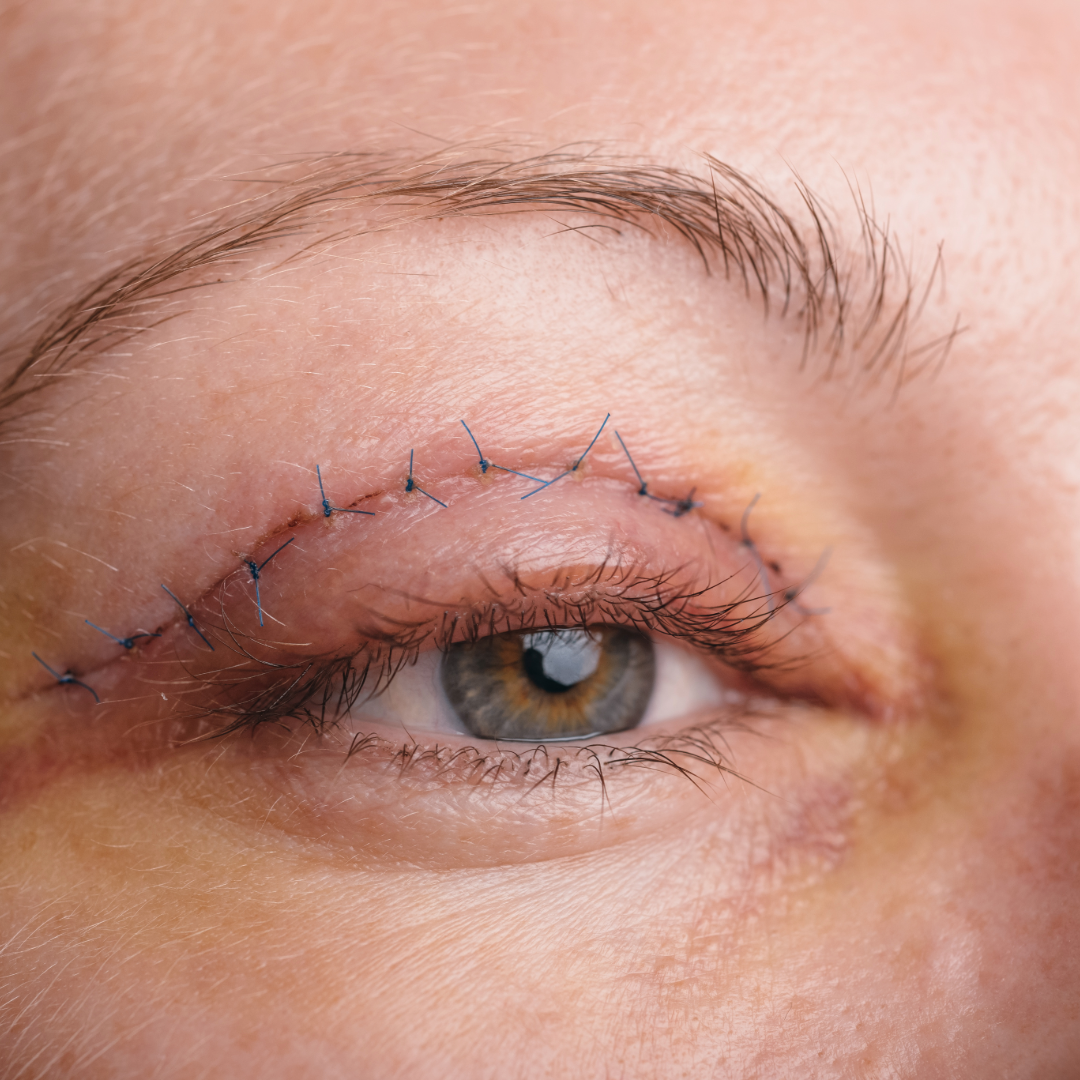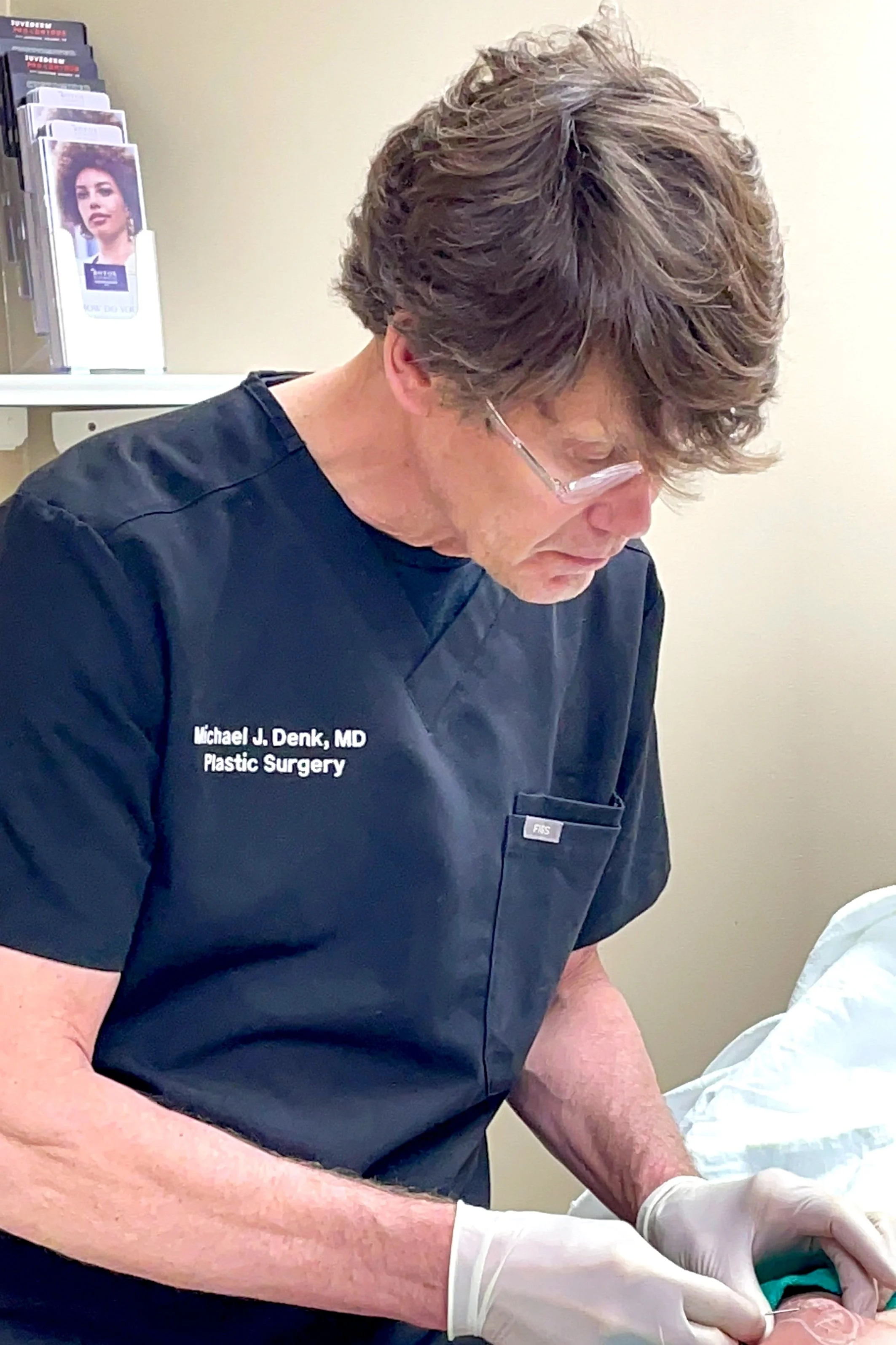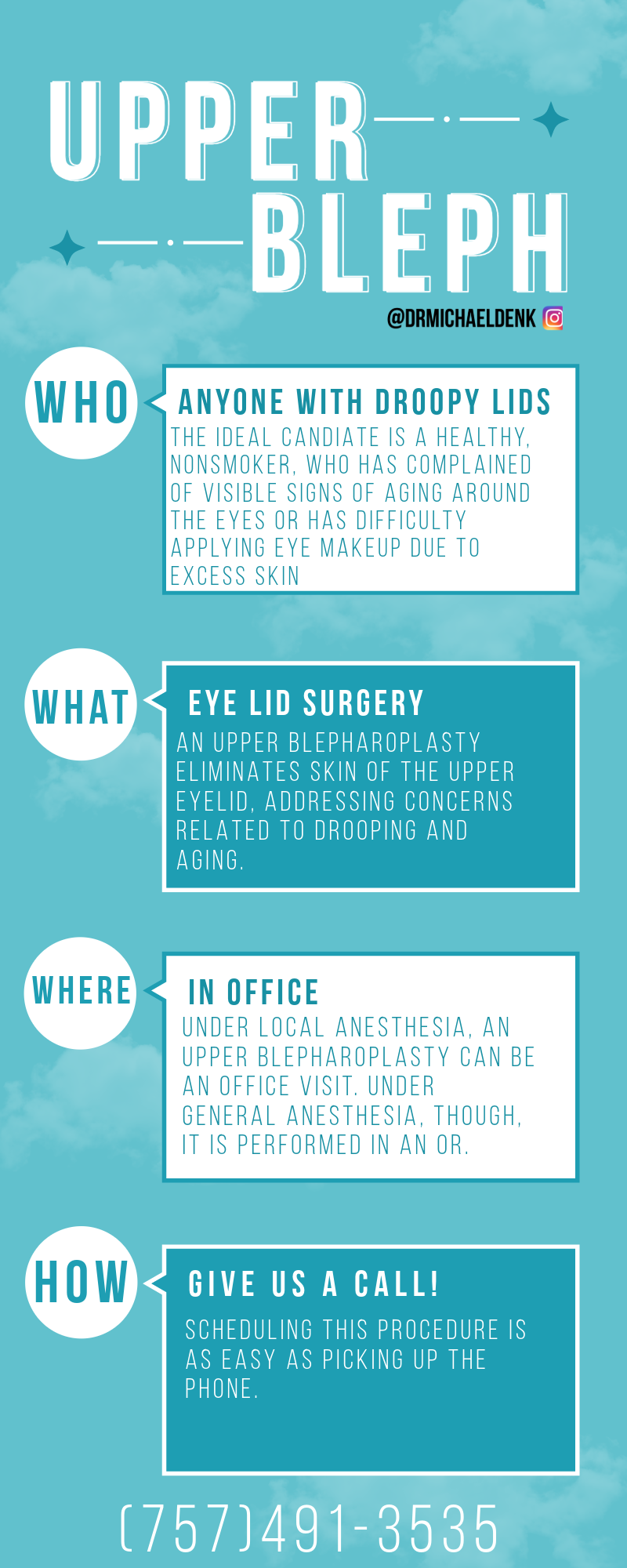Upper Blepharoplasty…awake?
In the ever-evolving world of plastic surgery, individuals seeking to enhance their natural beauty have various options to choose from. One such transformative procedure gaining popularity is the upper blepharoplasty, a surgery designed to rejuvenate the eyes by removing excess skin from the upper eyelids. In this blog post, I will delve into the benefits of an upper blepharoplasty performed under local anesthesia, highlighting the key differences between local and general anesthesia.
Before and 1 year After an Upper Blepharoplasty
The Goal of Upper Blepharoplasty:
The primary objective of an upper blepharoplasty is to eliminate excess skin of the upper eyelid. This directly addresses concerns related to drooping and sagging skin. This procedure is ideal for individuals who find themselves troubled by the appearance of their eyes, seeking a refreshed and revitalized look. A common complaint of my patients is that they have difficulty applying mascara and eyeshadow because the skin is folded on their lashes: An upper blepharoplasty rids them of that problem!
Ideal Candidate:
An ideal candidate for upper blepharoplasty is generally in good health, does not smoke, and is bothered by the visible and functional signs of aging around the eyes. The procedure can be customized to meet the unique needs and aesthetic goals of each patient.
Combining Procedures for Comprehensive Results:
Upper blepharoplasty can seamlessly be combined with other cosmetic procedures, enhancing overall facial harmony. Many individuals opt for a comprehensive approach, addressing multiple concerns simultaneously to achieve a more youthful and balanced appearance. Oftentimes, I perform an upper blepharoplasty with a lower blepharoplasty and/or brow lift. Injectables: Botox and/or Filler may also prove helpful.
Hidden Scars in Natural Creases:
One common concern among prospective patients is the visibility of scars after surgery. However, with an upper blepharoplasty, the incisions are strategically placed in the natural crease of the upper eyelid. This ensures that any resulting scars remain discreet, camouflaged within the eye's natural contour, and virtually imperceptible within a few months post-op.
Improving Vision:
Beyond aesthetic benefits, upper blepharoplasty may also improve vision in cases where excess skin hangs over the eye. By removing this redundant tissue, patients can experience a broader field of vision, contributing to both cosmetic and functional improvements.
Recovery Period:
One of the notable advantages of opting for upper blepharoplasty under local anesthesia is the relatively quick and easy recovery process. Most patients can expect a downtime of approximately 2-3 days, with minor bruising being the most common side effect. Fortunately, any bruising can be easily covered with makeup, allowing individuals to resume their daily activities with confidence within 7-8 days. Bruising can remain visible for 10-14 days, depending on its extent. Additional measures like oral arnica supplements, arnica gel, iced gauze, and topical laser treatments can minimize and eliminate unwanted bruising post-operatively.


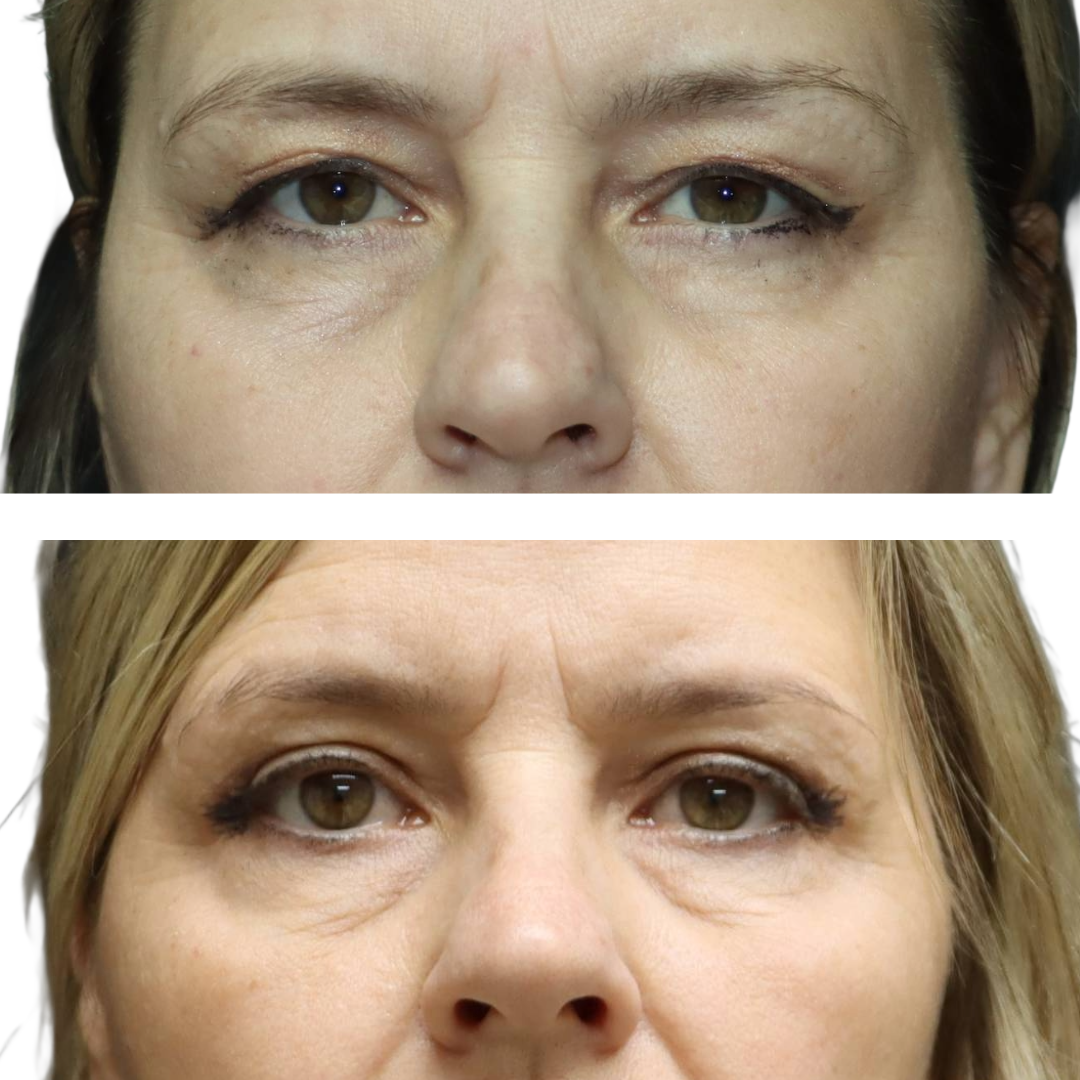
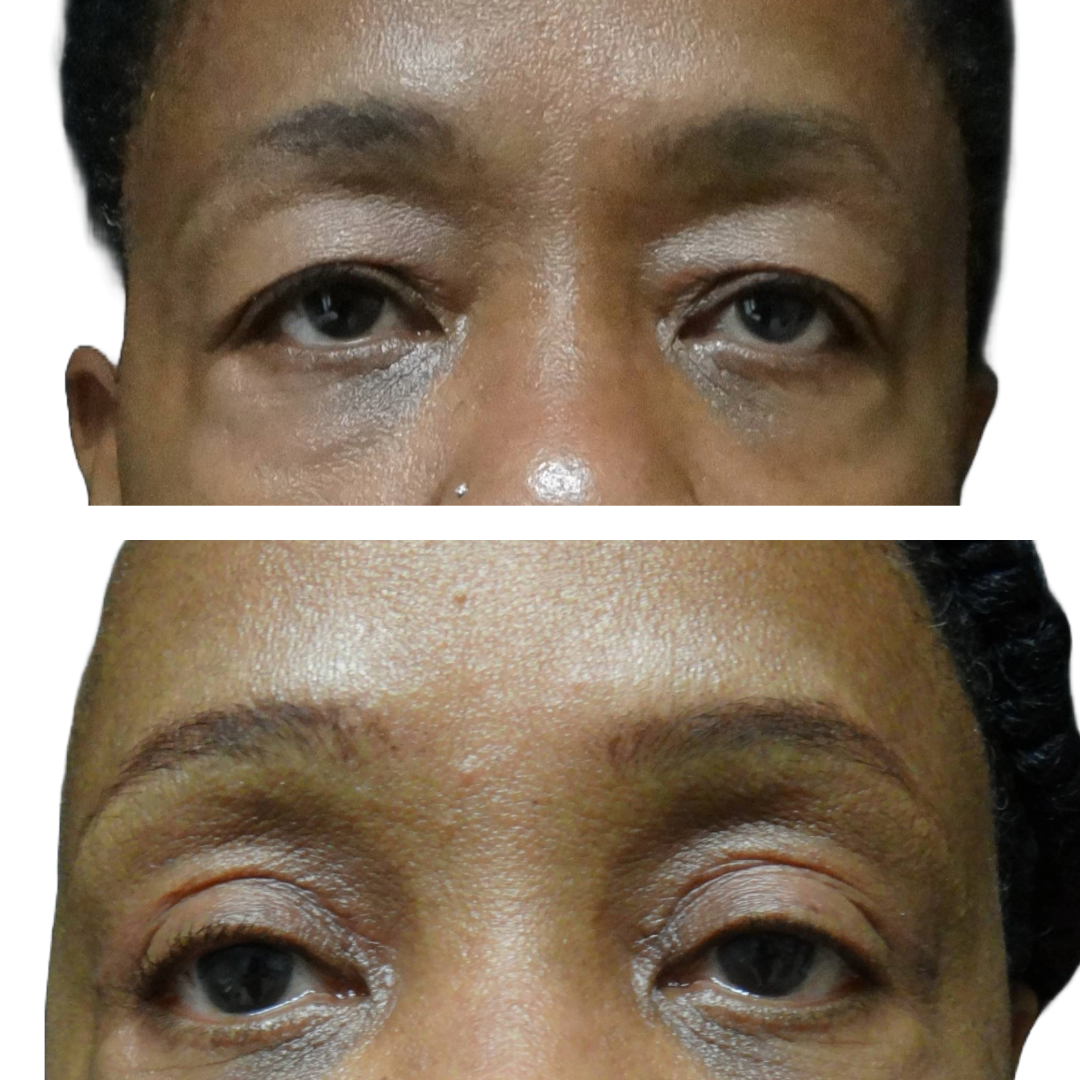
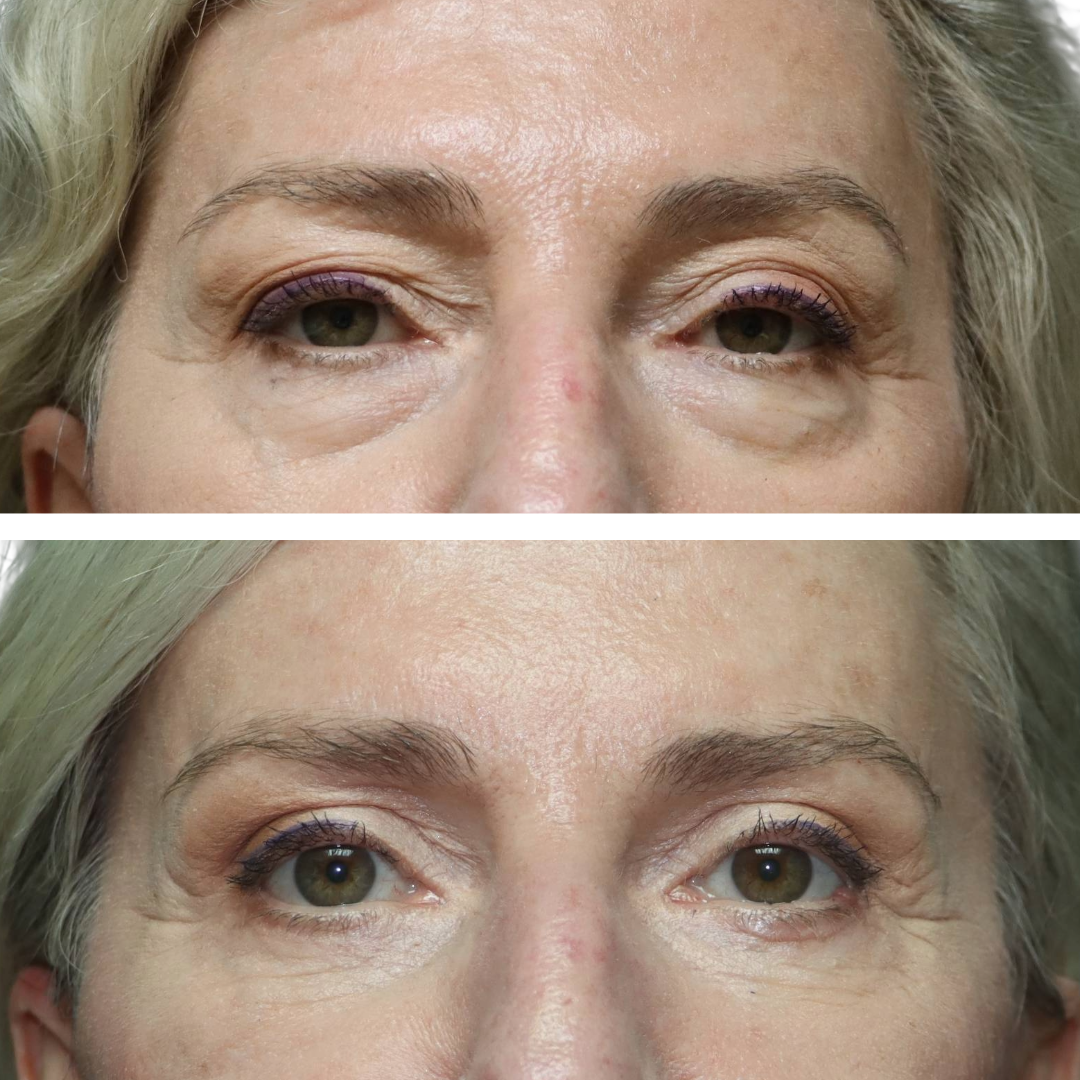
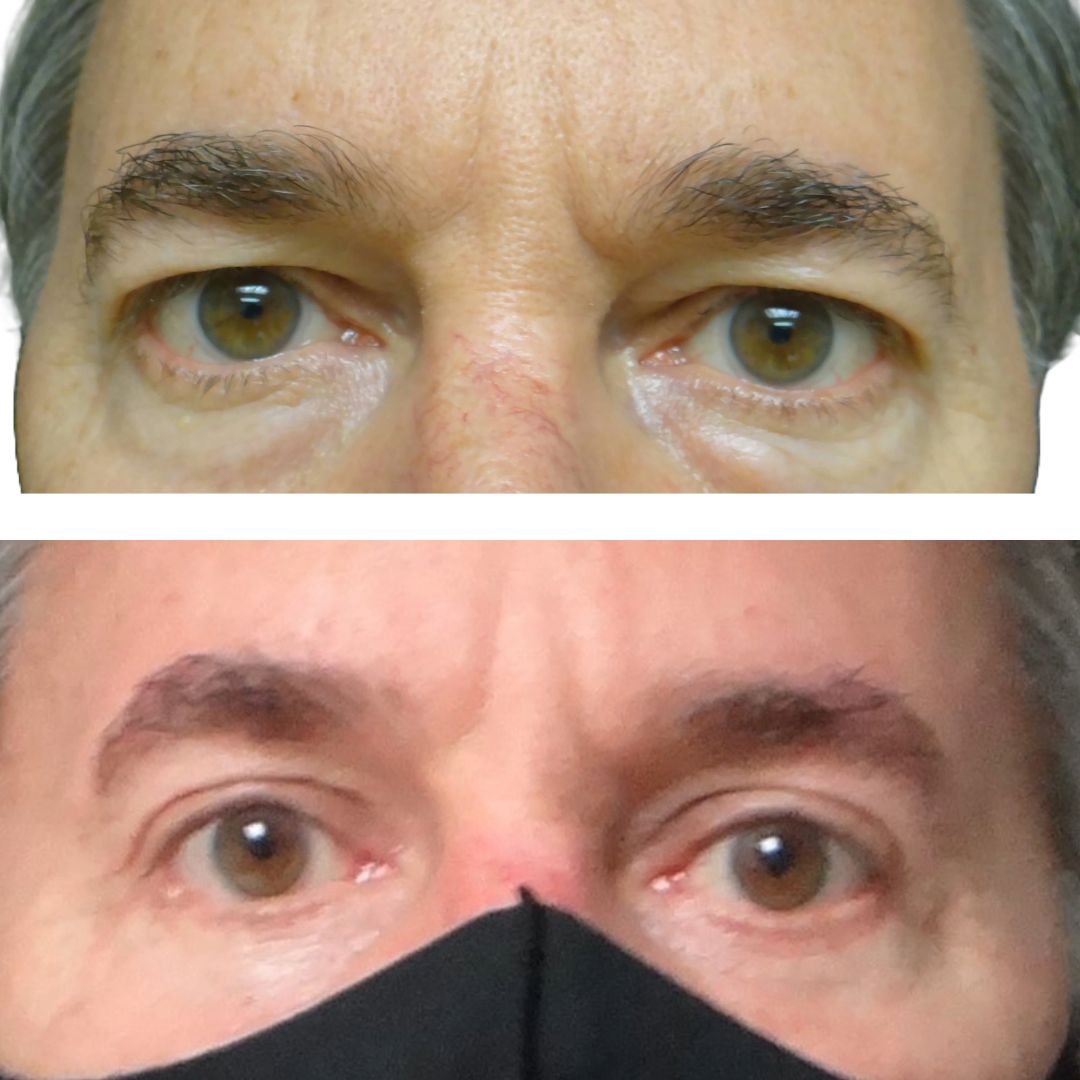
Local vs. General Anesthesia:
One significant consideration for those contemplating upper blepharoplasty is the choice between local and general anesthesia. Local anesthesia involves numbing only the specific area undergoing surgery, allowing the patient to remain awake during the procedure. On the other hand, general anesthesia induces a state of unconsciousness, rendering the patient completely unaware and asleep throughout the surgery. While surgery under local anesthesia may sound frightening, it actually isn’t.
Benefits of Local Anesthesia:
Reduced Risk and Recovery Time: Upper blepharoplasty performed under local anesthesia carries a lower risk compared to general anesthesia. Additionally, recovery time tends to be shorter, allowing patients to return to their daily activities sooner.
Patient Comfort and Control: Local anesthesia provides patients with the advantage of being conscious during the procedure. This allows for better communication with the surgeon, ensuring the patient's comfort and facilitating any necessary adjustments based on their feedback.
Avoidance of Potential General Anesthesia Side Effects: Local anesthesia eliminates the potential side effects associated with general anesthesia, such as nausea, grogginess, and a more extended recovery period. Oftentimes, patients that have upper blepharoplasties under local anesthesia actually drive themselves home.
Cost-Effectiveness: Utilizing local anesthesia reduces an individual’s costs as it eliminates the need for an anesthesiologist and the associated fees.
Generally more efficient: General anesthesia is accompanied by more steps and planning. Before surgery, there is more paperwork. During surgery, patients are required to change into a sterile surgical gown. And after surgery, there is a need for a caregiver. Local anesthesia eliminates everything except for a one page consent form..
Conclusion:
In conclusion, upper blepharoplasty under local anesthesia has emerged as a highly beneficial option for those seeking to rejuvenate their eyes and achieve a more youthful appearance. With discrete scars, the ability to address multiple concerns simultaneously, and a relatively short recovery period, this procedure stands out as a transformative solution for individuals looking to enhance both their aesthetic appeal and overall well-being. If you find yourself troubled by the appearance of your eyes, consult with a board certified plastic surgeon to explore the possibilities that upper blepharoplasty can off
Dr. Michael Denk
February 7, 2024


